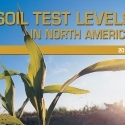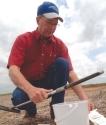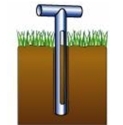08 Feb 2013
Eastern Canada Soil Test P
Soil Test Summaries
The figures below use histograms to show the frequency distribution of soils sampled for the crop years 2001, 2005 and 2010. Note that a number of different soil tests are used in the region. For comparison purposes, all soil test levels have been converted to the equivalent of the Bray P1 soil test. Assumptions for equivalencies are shown in Table 1 below.
Links below each figure lead to crop nutrient balance trend information.
With a long history of intensive crop production and a livestock industry dependent on imported feeds, many soils of Eastern Canada have been built up in phosphorus. However, high soil test levels are declining in areas where the nutrient balance has shifted into deficit. This decline is more evident in Ontario than in Quebec and the Atlantic provinces. See Eastern Canada P Balance
The decline in frequency of Ontario soils testing in the highest category corresponds to a cropland P balance that has fallen into deficit over the past 5 years. While only a minority of the agricultural soils of the province are suboptimal in fertility, maintaining optimal fertility will require increased (and better-distributed) inputs in the future. About 31% of soils tested below the 26 ppm level, assumed to correspond to the critical level of 20 ppm by the Olsen method. See Ontario P Balance
Legislation has controlled the management of agricultural P inputs in Quebec since 1997. Soil P fertility levels appear to be holding constant. A considerable fraction of Quebec soils appear to be suboptimal in P fertility. About 56% of soils tested below the 45 ppm level, assumed to correspond to the level of 60 ppm by the Mehlich-3 method. Critical levels of soil test P in Quebec are expressed in terms of percent saturation, related to soil exchangeable aluminum. See Quebec P Balance
In Atlantic Canada, the potato crops in Prince Edward Island and New Brunswick, and the specialty crops of the Annapolis Valley in Nova Scotia, are a dominant influence on the soil test P distribution. When managed for optimum yield and quality, these crops tend to require larger P additions than they remove. Note that no data were obtained for Nova Scotia in 2005, but a large number of Nova Scotia soils were included in 2010, arising from an incentive program for soil testing. Detailed results by province are given below. See Atlantic Canada P Balance
In New Brunswick the distribution of soil test P has changed very little since 2001. About 19% of soils tested below the 41 ppm level, assumed to correspond to the critical level of 58 ppm by the Mehlich-3 method.
In Nova Scotia, the proportion of soils testing very high has declined slightly since 2001. About 37% of soils tested below the 35 ppm level, assumed to correspond to the critical level of 50 ppm (or 229 kg/ha P2O5) by the Mehlich-3 method.
In Prince Edward Island, the distribution of soil test P has changed very little since 2001. About 34% of soils tested below the 100 ppm level, assumed to correspond to the critical level for potatoes of 118 ppm by the Mehlich-3 method.
On the limited agricultural area in Newfoundland, soil test P shifted upwards slightly. About 21% of soils tested below the critical level of 40 ppm by the Bray-P2 method.
Table 1. Soil test equivalency assumptions.
The above equivalencies were assumed for the purpose of estimating soil test level frequency distributions across wide areas. They are not recommended for use in converting soil test values for individual fields for the purpose of determining appropriate rates to apply.



